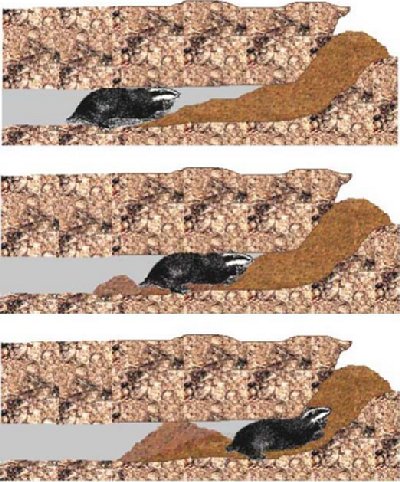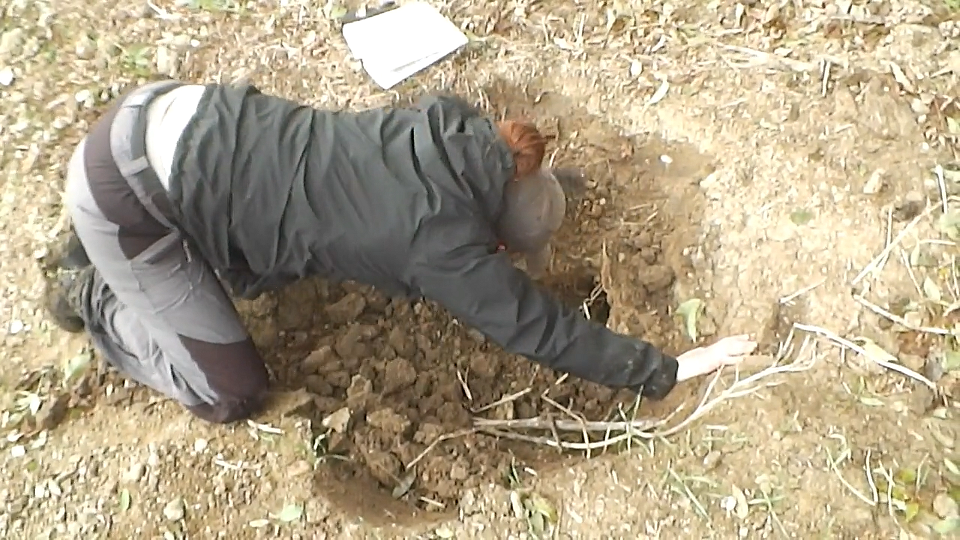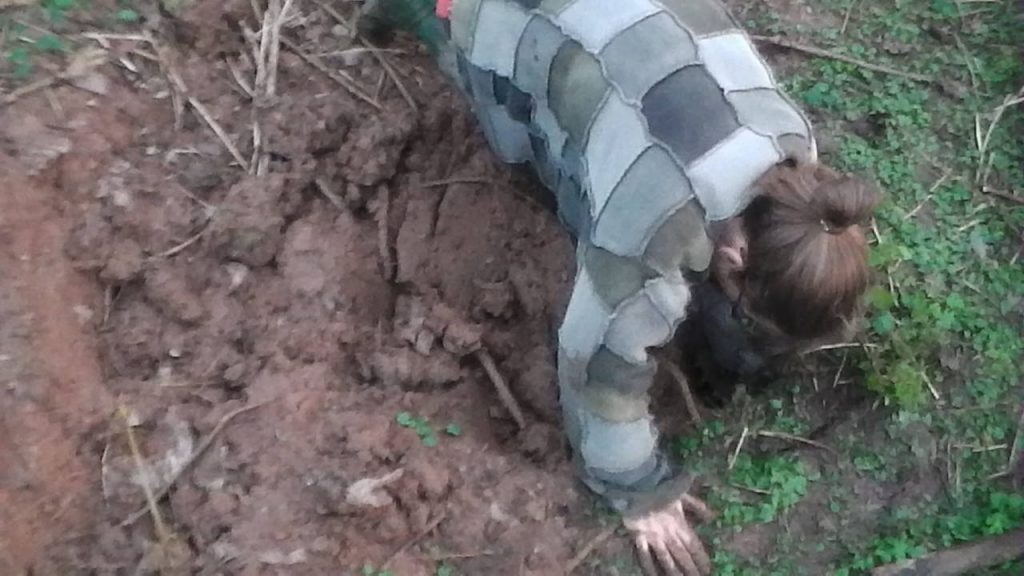“Successful hunting depends very largely on thorough earth-stopping”
(‘Diary of a Foxhunting Man’, Terrence Carroll)
We decided to write this short article to explain to our supporters why we choose to unblock badger setts (and fox earths). We come across many of these when out at hunt meets as it is a practice which is centuries-old to obstruct setts and earths to prevent foxes from being able to seek shelter in them whilst being hunted. Fox hunts want long, exciting chases, not a short chase and then a long dig-out (many people enjoy a dig-out but riders who pay a membership don’t want to be sitting around on horseback but instead riding cross-country). Jocelyn Lucas in ‘Hunt and Working Terriers’ states that “big badger earths are such a nuisance in a hunting country” as they can be very complex structures with many underground chambers and potentially hundreds of metres of tunnels where a fox can seek shelter. Peter Beckford in ‘Thoughts on Hunting’ echoes this by stating that badgers “make strong earths… fatal to your sport if you do not [stop them]”.
Stopping = blocking.
We noticed that there was little work being done to prevent / expose / raise awareness of the practice and that few anti-hunt groups ever mentioned badger setts unless they had caught terriermen about to dig-out at one. No one was systematically checking and unblocking setts around hunt meets and publicising what they were finding out. And so we started to do so, in 2014, often with sett-blocking patrols beginning around 5am on hunting days and collating and publicising data on what we were finding. In doing so, we realised how little research has been done on the effect of sett-blocking on badgers themselves. In this short article we want to touch on that as much as we can as well.
In addition to the lack of action that was being taken (including by the police) and the lack of research on the potential effect on badgers of sett-blocking, we noticed that some groups were putting out contradictory information regarding what to do if you came across blocked setts and earths. Below are two screenshots from different areas of the same website…
We will explain our position on unblocking setts and earths in the following section.
Impact on Foxes:
How blocked setts (and earths, etc.) will have a negative impact for foxes
The role of the earth-stopper is to block up holes like earths in order to prevent the hunted animal from seeking shelter in them. An article entitled ‘Beware Brock!’ in an edition of ‘Hounds’ magazine refers to “legions of earth-stoppers who turn out in all weathers to ensure good sport”, basically going out to obstruct setts and earths so that foxes will have to keep running and thereby ensuring a good run for the hounds and a good ride for the humans.
The first of the two screenshots we have included above states, regarding any blocked setts / earths that are found… “if these are in soft soil don’t unblock the earth, as this could create an opportunity for a dig out. If you unblock such an earth and a fox goes to ground, the terriermen are more likely to block any exits and dig out the fox”.
We do not agree with the above statement… well, no, it is true – an open sett or earth could see a fox going to ground and then being dug out. However, a fox with nowhere to go to ground will have to keep running until they find somewhere to escape (hay bales, an earth or sett, a drain, etc where a dig out could take place anyway) or they manage to lose the hounds due to bad scenting conditions or being able to foil the scent by running through a smelly area (farmyard, field of farm animals, across a manure pile, past a bonfire, over a road) or by having the scent foiled by sabs* spraying something like citronella or by managing to keep running until after dark / into an area the hunt are unable to follow. In short, the fox needs to keep running if there is nowhere to escape.
*many areas in which we sab in are landlocked areas – they do not have much road access – and so we find ourselves inland on foot. People on horseback and hounds can move a lot faster than we can on foot. While we are experienced sabs, and can often predict where we need to be to be in the right place to film a fox running into the open and to intervene between them and hounds if the pack pick up on the line, hunt staff can collect hounds and take them further on to try and pick up the scent again (which would mean we would have to run / drive round to get in between once more) or hounds can re-cast and pick up on the scent again. Each time we intervene the fox has more valuable seconds to make their escape but it is difficult to always get into the right position to intervene
The alternative to having to keep running is, obviously, going to ground. While terriermen are not adverse to digging out badger setts and earths (and with using locator devices these days it is easier to accurately locate where a terrier and fox are in the structure) setts can be very complex and will take time to dig into. Additionally, as it will take time, that gives us more of a chance of being able to get to the location and prevent the dig out from taking place, unblocking entrances and observing from a distance to allow a hunted fox to rest and then make a break for somewhere else before anyone who is cocky enough comes back for a second try and digging to them. If we’d checked the area prior to the hunt meet and unblocked setts, and then later in the day the hounds were following a fox and sounded like they were marking to ground (or we had lost them but knew which direction they had been headed in) we would know where to head to check on the setts. In this video, we had come across hounds possibly marking to ground – the huntsman had started to gather the pack and move away from the area as we arrived and we followed him for ten or so minutes to watch where he went and update other sabs… we then returned to where we thought hounds may have marked and intervened in a dig-out at a sett.
In short, we feel that it is a lot easier for us in many situations to prevent a dig-out at a known sett / earth than being in the right place at the right time to intervene by getting between fox and hounds each time the hounds pick up on a scent. It is not black and white and each scenario will play out differently… but we will always unblock setts and earths that we find, it is too risky not to.
In another example, a sab was able to prevent a dig-out from occurring in the following video as hounds had marked to ground and the hunt were awaiting the arrival of terriermen, giving the sab time to reach the area on foot and prevent damage being done. If the fox had got to the area and been unable to go to ground, instead having to keep running, the sab would not have reached the location in time to stop the pack.
In this case, other sett-checkers turned up later in the day to keep an eye on the sett until well after dark, ensuring this fox was safe from anyone from the hunt coming back to the area. It is not fool-proof and terriermen can always come back at a later time to attempt to flush out / dig down to any fox who hasn’t left the sett… but that can also happen on non-hunting days and at setts that we do not know about, so at least we are minimising the damage that is done by unblocking and monitoring those we know about. Hopefully by raising more awareness we will deter some from taking such actions, keeping them on their toes the next time they go out by putting up cameras and knowing our stuff when it comes to the actions we take.
Impact on Badgers:
How sett-blocking to facilitate fox hunting still negatively impacts badgers
A blog post by Brockwatcher referenced an old report by the National Federation of Badger Groups (which later became the Badger Trust) on the potential for blocked setts to become a fatal hazard for the resident badgers. The picture used here is taken from that blog post and is from the report. The explanation of what it portrays is as follows:

“a badger inside a sett will naturally dig at soil blocking the sett entrance, in an attempt to exit the sett. As the badger pushes the soil behind it, further down the tunnel, it creates a new mass of soil inside the sett. Eventually the mass of soil behind the badger builds up so that the badger cannot move back down the tunnel. If there is still soil in the entrance, it will be unable to move forwards – and the badger becomes trapped between two plugs of soil, suffocating in the restricted air pocket before it can dig itself out“.
It was also mentioned that there is a possibility for a badger to be crushed by the soil used to block a sett especially if rainfall has recently been heavy. In Leicestershire in 1995 a badger was found trapped under soil which had subsided in the entrance of a blocked sett. There had been persistent rain prior to that and when taken to a vet the badger was found to have a ruptured spleen and had to be put to sleep.
In Three Counties Sabs we will always unblock at least two entrances of a sett, allowing any hunted foxes to go to ground and making it possible for badgers to get out and more safely dig back into any blocked entrances from outside.
There has been some research completed on a possible connection between blocking badger setts and reproductive failure in badgers. When captured for vaccination against bTB in one study badgers were found to subsequently lose body weight which could have an impact on odds of pregnancy (higher body weight increases the odds of a badger becoming pregnant). In another study by Linda Sadler and Ian Montgomery in 2004 they stated that in the study “we demonstrate that badger sett disturbance affects both social group size and the number of social groups, thus influencing overall badger density. We also show that high levels of sett disturbance are constraining the growth of the badger population”. This study took place in Northern Ireland which did not bring in protective legislation in line with that of England and Wales at the same time.
Whilst we have no way of knowing exactly how much of an effect sett-blocking will have on the population of badgers (particularly as the areas we work in are largely part of the badger culling zones within Gloucestershire / Wiltshire / Worcestershire and future Oxfordshire zones) it certainly seems like there could be more effects on the survival of badgers than just the immediate dangers faced by them of being blocked into their setts.
The law:
We already have a page dedicated to the Protection of Badgers Act 1992 but, in short, it is not unlawful to unblock badger sett entrances. The law prohibits creating an obstruction in sett entrances and tunnels and causing damage to badger setts – many setts that we find are blocked with lumps of earth, branches, bricks and rocks which are easily distinguished from the actual structure of the sett and are removed without causing any damage to the structure itself. For more ‘hard-blocking’ (which is often done with machinery of some kind) tools would normally be required to remove the obstructing earth / materials and therefore damage may well be caused – in that case it would be advisable to contact wildlife crime officers who will be lawfully able to unblock the sett (in some situations hard-blocking with no air holes is done in order to gas a sett, so it can be advisable to seek advice before attempting to unblock it).
For more information regarding badger sett and fox earth stopping (blocking) check out our articles ‘Hunts vs Badgers’ and ‘Terrierwork: Past and Present’ and if you need more information on how to identify badger setts (important if you wish to protect them from hunts, badger baiters and so on) check out our information page here.
Article written January 2020




